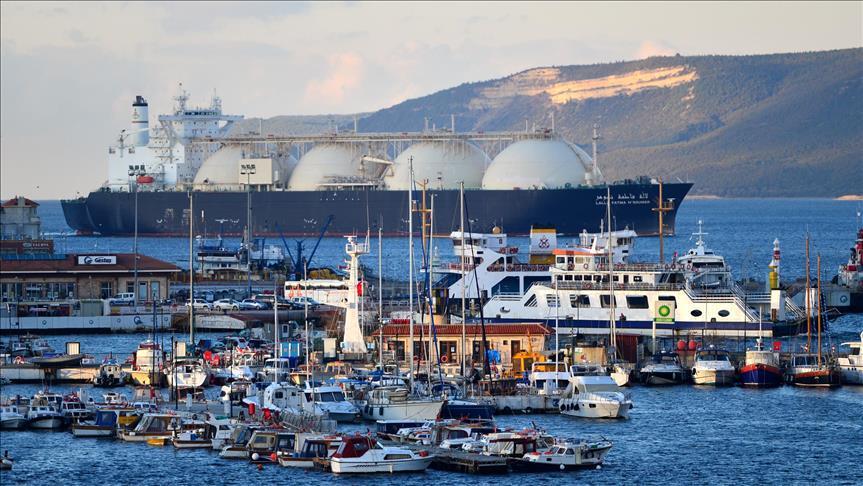- The Writer holds an MSc in Eurasian Political Economy & Energy from King’s College London and also an MA in European Studies from Sabancı University.
Many LNG exporter countries, with dwindling gas reserves, have been unable to meet growing domestic gas demand. Hampered mainly by low oil prices and regulatory restrictions, exporter countries from Australia to Egypt and Oman have found it hard to politically justify their LNG export strategies when their domestic gas shortfalls became evident from 2015 onward. Although robust gas price incentives together with generous fiscal easing were employed in the exploration and discovery of new giant gas fields, these measures have not yet proven successful to satisfy domestic demand or meet LNG export targets as in the case in Egypt.
Given that these promising LNG exporter countries generate great volumes of energy through natural gas, the impact of very costly LNG projects on gas prices has become extremely critical. Gas shortages, which have emerged following the start-up of LNG export plants, have heightened the risks of LNG projects reducing gas supply volumes for the domestic gas market.
The Australian Energy Market Operator has been forced to revise down gas sales because of shortages in 2017. Dwindling sales could also result in further industrial closure or even to blackouts. Due to the priority given to LNG exportation, domestic price levels have increased beyond their parity levels, which have contributed to deteriorating competition in the market.
The cost of gas production and LNG netback prices has been on the rise in Australia since 2010. The gradual rise seen between 2010 and 2016 reached its peak between 2016 and 2017, forcing policymakers to reconsider Australia’s LNG export strategy over the long term. While gas price levels seem to have stabilized in recent months as a result of the decision taken by LNG exporters to divert natural gas spared for export to the domestic gas consumption, how sustainable this policy decision to meet rising domestic demand remains to be seen. Unless new fields are found and energy diversification policies are implemented, Australia’s role as a promising LNG supplier could now be seen as overly ambitious.
In another case, the relatively smaller gas producing country, Oman, recently announced its aim to divert LNG exports to the domestic market to meet increasing demand. Nonetheless, Oman was initially reluctant to give up on cash earning’s from the sale of LNG to Japan and South Korea at a time when rising domestic demand for power generation caused gas shortfalls. This then forced policymakers to reevaluate their export plans.
To meet increasing domestic demand, Oman imported natural gas from neighboring countries mainly pipeline gas from Qatar. For a country that consumes over 70 percent of its gas production for power generation, it does not seem feasible to continue LNG exports over the long term as domestic demand has incrementally increased over the years. Because the currently existing LNG contracts end in 2024, policymaker’s final decision on whether they will divert LNG for domestic consumption or continue gas imports via pipeline to meet rising domestic demand from neighboring countries will remain to be seen.
Egypt is another country that has to face gas shortages. One of the most populous countries in its region has seen a boom in domestic demand that has been heavily subsidized at a time when its gas fields are depleting.
The closure of the Damietta LNG plant, as well as the near closure of the Shell-operated Idku liquefaction terminal back in 2014, compelled the government to come up with a short-term solution. To meet the increasing demand and address the temporary supply shortages, the Egyptian government built a floating storage and regasification unit in 2016, which cushioned the increasing discomfort stemming from power shortages.
While Egypt is poised to regain its LNG exporter status as of 2018, domestic production from facilities other than the recently discovered giant Zohr field been in decline. Furthermore, the country has to address the unsustainable heavy gas price subsidies and the possibility of output declines in the future.
With the production start-up at the Zohr gas field, BP announced that production is expected to increase from 2018 to as much as 2 billion cubic feet per day. Self-sufficiency is still a major issue in Egypt given the huge hunger for power generation and the ever-increasing demand from its growing population.
For many years, policymakers sought for Egypt to become a regional LNG exporter. But the political justification for LNG exports when the country could face gas shortages is a stumbling block against pursuing this policy unless an agreement is reached with neighboring Mediterranean countries to facilitate refining their own LNG.
The experiences of Australia, Egypt and Oman, which are developing LNG, have commonalities in their problems in meeting domestic gas shortages. Domestic gas supply shortages in these countries have shown that greater planning is needed if blackouts are to be eliminated and rising domestic demand is to be met on time without diverting already scheduled LNG cargoes.
Any attempt to become a major LNG supplier without meeting domestic gas market needs would only be short-lived and is destined to end in failure when trying to obtain LNG contracts in future. One of the questions that these countries should consider is whether the revenue earned from gas exports and in serving domestic demand is sufficient enough to benefit their broader economies.
- Opinions expressed in this piece are the author’s own and do not necessarily reflect Anadolu Agency's editorial policy.


